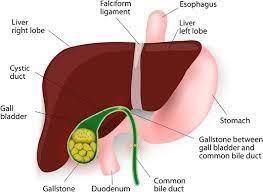A nurse in an outpatient mental health clinic is caring for a client.
Exhibit 1
Vital Signs
3 months ago:
Blood pressure 116/68 mm Hg
Heart rate 82/min
Respiratory rate 16/min
Temperature 36.7° C(98.1° F)
SaO2 97% on room air
Today:
Blood pressure 128/76 mm Hg
Heart rate 104/min
Respiratory rate 22/min
Temperature 37.4° C(99.4° F)
SaO2 97% on room air
Exhibit 2
Nurses' Notes
3 months ago:
Client recently admitted with new diagnosis of schizophrenia. Received inpatient treatment for 10 days and was discharged 1 week ago. Client is alert and oriented to person, place, time, and situation. Responds appropriately to questions. Client reports sleeping well and working at a local retail store.
Today:
Client presents for follow-up visit. Pressured speech noted.
Appears to be listening to unseen others. Client is restless.
Frequently getting out of chair. Appears tired and disheveled.
Exhibit 3
Graphic Record
3 months ago:
83.9 kg (185 lb)
Today:
83 kg(183 lb)
A nurse in an outpatient mental health clinic is caring for a client. Select the 3 findings that require immediate follow-up.
Weight
Neuro status
Auditory hallucinations
Speech
Restlessness
Correct Answer : C,D,E
A.The client's weight has remained relatively stable (83.9 kg to 83 kg), which does not indicate an immediate health concern compared to the acute behavioral and mental health symptoms observed.
B. While the client's neurostatus (mental status) is affected by the presence of auditory hallucinations, pressured speech, and restlessness, these symptoms are more critical in terms of immediate management than a general assessment of neurologic status.
C. Auditory hallucinations, such as appearing to listen to unseen others, are concerning symptoms indicating possible exacerbation of schizophrenia or medication non-compliance. Immediate assessment and intervention by mental health professionals are needed.
D. Pressured speechis commonly seen in mania or anxiety.Poverty of speechcan be associated with shyness, depression, schizophrenia, or cognitive impairment. Pressured speech noted along with other symptoms can indicate agitation or worsening of mental health symptoms. It suggests the client may be experiencing an acute phase of their illness, requiring evaluation and possibly adjustment of medications.
E. Restlessness, frequently getting out of the chair, and appearing tired and disheveled indicate agitation and potential agitation or anxiety. This could be a sign of increased agitation, anxiety, or distress, which needs immediate attention to prevent escalation.
Nursing Test Bank
Naxlex Comprehensive Predictor Exams
Related Questions
Correct Answer is D
Explanation
Choice A reason:
Determine previous coping skills used by the client is not appropriate. Assessing the client's previous coping skills is an essential step in the assessment phase of the therapeutic relationship, not specifically during the orientation phase. This information helps the nurse to understand the client's coping mechanisms and identify potential areas for improvement or support.
Choice B reason:
Facilitate the client's problem-solving skills is not appropriate the nurse may work on facilitating the client's problem-solving skills throughout the therapeutic relationship, including during the working phase. During this phase, the nurse and client collaborate to explore and address the client's concerns and challenges.
Choice C reason:
Assisting the client in expressing alternative behaviours is not appropriate. This action may also be part of the working phase, where the nurse helps the client explore alternative behaviours and coping strategies to address their issues and challenges.
Choice D reason:
The orientation phase is the initial stage of the therapeutic relationship where the nurse and the client get to know each other and establish the groundwork for their working relationship. During this phase, it is essential to clarify the roles and responsibilities of both the nurse and the client to ensure a clear understanding of each other's expectations.
Correct Answer is A
Explanation
Choice A reason:
Acetaminophen is a safer choice for pain relief in clients with cholelithiasis because it does not have significant effects on the gallbladder or biliary system. It can provide effective pain relief without exacerbating the underlying condition.
Choice B reason:
Omeprazole Omeprazole should not administer because it is a proton pump inhibitor (PPI) used to reduce stomach acid production and treat conditions such as gastroesophageal reflux disease (GERD) and peptic ulcers. It is not indicated for the treatment of pain and discomfort associated with cholelithiasis.
Choice C reason
Should not be administered
Metoclopramide Metoclopramide should not be administered because it is a medication used to treat gastrointestinal issues such as nausea, vomiting, and gastroparesis. It is not indicated for the treatment of pain associated with cholelithiasis.
Choice D reason:
Ketorolac Ketorolac should not be administered because it is an NSAID used for moderate to severe pain. However, it should be avoided in clients with cholelithiasis due to its potential adverse effects on the gallbladder and biliary system.

Whether you are a student looking to ace your exams or a practicing nurse seeking to enhance your expertise , our nursing education contents will empower you with the confidence and competence to make a difference in the lives of patients and become a respected leader in the healthcare field.
Visit Naxlex, invest in your future and unlock endless possibilities with our unparalleled nursing education contents today
Report Wrong Answer on the Current Question
Do you disagree with the answer? If yes, what is your expected answer? Explain.
Kindly be descriptive with the issue you are facing.
